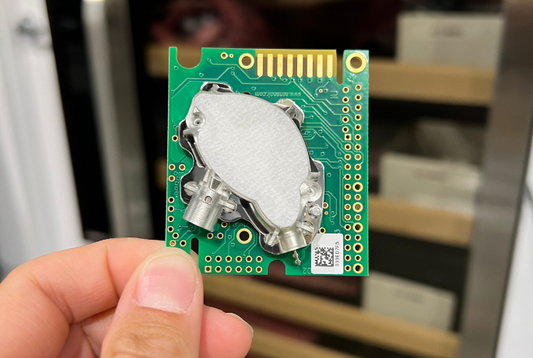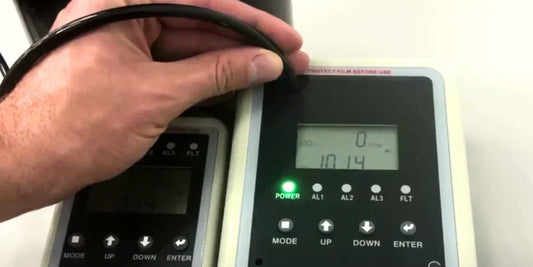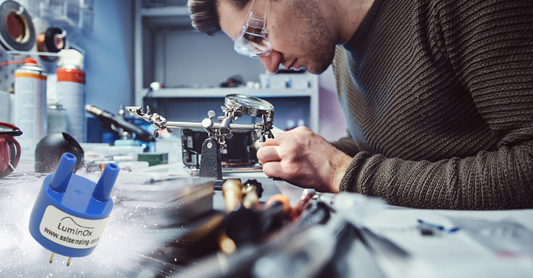News
Sidebar
Categories
How does an NDIR CO2 Sensor Work?
Learn how NDIR CO2 sensors like the K30 work, their components, and why they're the best choice for accurate CO2 monitoring in air quality, greenhouses, scientific research, and safety applications.
CO2 Sensor vs. VOC Sensor: What's the Difference?
CO2 Sensor Range: PPM and Percentage Compared
CO2 Sensor Calibration: What You Need to Know
Ensure accuracy and compliance with CO2Meter’s annual calibration services for fixed CO2 gas safety systems and sensors. Trusted by industries to meet OSHA and fire code standards.
Solid-State Oxygen Sensors Combine Safety and Performance
Benefits of solid-state oxygen gas sensors for accurate, long-life gas detection in industrial, medical, and environmental applications.
Stay Informed with Our Latest Updates
Subscribe to our newsletter for the latest news, product updates, and industry insights.
Still need Help? Talk to an Expert.
We'll be happy to help you find the right product!
Call us at 877.678.4259.
Still need Help? Talk to an Expert.
We'll be happy to help you find the right product!
Call us at 877.678.4259.
Still need Help? Talk to an Expert.
We'll be happy to help you find the right product!
Call us at 877.678.4259.
Still need Help? Talk to an Expert.
We'll be happy to help you find the right product!
Call us at 877.678.4259.
Still need Help? Talk to an Expert.
We'll be happy to help you find the right product!
Call us at 877.678.4259.
Still need Help? Talk to an Expert.
We'll be happy to help you find the right product!
Call us at 877.678.4259.
Still need Help? Talk to an Expert.
We'll be happy to help you find the right product!
Call us at 877.678.4259.
Still need Help? Talk to an Expert.
We'll be happy to help you find the right product!
Call us at 877.678.4259.
Still need Help? Talk to an Expert.
We'll be happy to help you find the right product!
Call us at 877.678.4259.
Still need Help? Talk to an Expert.
We'll be happy to help you find the right product!
Call us at 877.678.4259.
Still need Help? Talk to an Expert.
We'll be happy to help you find the right product!
Call us at 877.678.4259.
Still need Help? Talk to an Expert.
We'll be happy to help you find the right product!
Call us at 877.678.4259.
Still need Help? Talk to an Expert.
We'll be happy to help you find the right product!
Call us at 877.678.4259.
Still need Help? Talk to an Expert.
We'll be happy to help you find the right product!
Call us at 877.678.4259.
Still need Help? Talk to an Expert.
We'll be happy to help you find the right product!
Call us at 877.678.4259.
Still need Help? Talk to an Expert.
We'll be happy to help you find the right product!
Call us at 877.678.4259.
Still need Help? Talk to an Expert.
We'll be happy to help you find the right product!
Call us at 877.678.4259.
Still need Help? Talk to an Expert.
We'll be happy to help you find the right product!
Call us at 877.678.4259.
Still need Help? Talk to an Expert.
We'll be happy to help you find the right product!
Call us at 877.678.4259.
Still need Help? Talk to an Expert.
We'll be happy to help you find the right product!
Call us at 877.678.4259.
Still need Help? Talk to an Expert.
We'll be happy to help you find the right product!
Call us at 877.678.4259.
Still need Help? Talk to an Expert.
We'll be happy to help you find the right product!
Call us at 877.678.4259.
Still need Help? Talk to an Expert.
We'll be happy to help you find the right product!
Call us at 877.678.4259.
Still need Help? Talk to an Expert.
We'll be happy to help you find the right product!
Call us at 877.678.4259.
Still need Help? Talk to an Expert.
We'll be happy to help you find the right product!
Call us at 877.678.4259.





